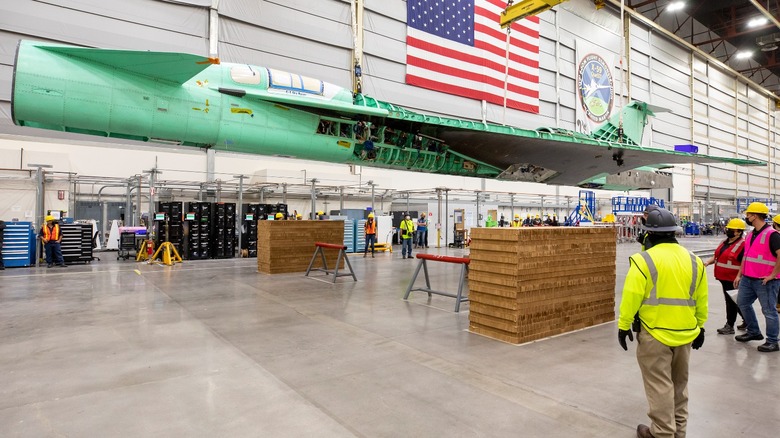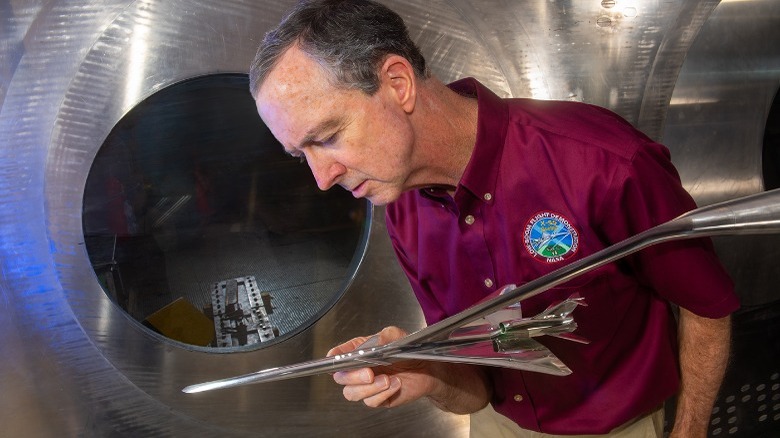NASA Quesst Gives X-59 Supersonic Stealth Jet Mission A Hopeful New Name
We have been hearing about NASA's under-development supersonic aircraft, the Lockheed Martin X-59 QueSST, for quite some time now. The "QueSST" bit of the title for the aircraft is an acronym: the letters stand for Quiet SuperSonic Technology. This craft and this technology are a part of a project that was, until recently, called the Low-Boom Flight Demonstration. In development for well over four years now, the project has been given a name change, courtesy of NASA's latest vision for the future. In an official blog post, NASA announced that it is changing the name of the project from "Low-Boom Flight Demonstration" to the much simpler "Quesst."
Along with a new name for the project, NASA also announced a new identity for the mission with an entirely new logo in blue and green colors. These colors, according to NASA, "represent the elements of Quesst." If you haven't noticed yet, the new logo shows the angular roofs of houses in blue with green supersonic shockwaves above them. According to NASA, this imagery "highlights the groundbreaking research that will be conducted across several U.S. cities during this mission."
What is NASA Quesst?
One of the major problems associated with supersonic planes is that they are terribly noisy. The thunderous sonic boom associated with these planes was one of the reasons the U.S. government banned all supersonic flights overland. For decades, scientists and aerospace engineers have been searching for a solution to this problem. In 2016, NASA gave an additional fillip to the efforts of researchers when it announced the Low-Boom Flight Demonstration project. The goal was to design an aircraft that would travel faster than sound — without creating the associated sonic boom.
Lockheed Martin emerged as the sole bidder for the project in 2016, and actual work on the project began in 2018. Recent reports suggest that the supersonic aircraft developed by Lockheed Martin with NASA is fast approaching completion. The X59 will definitely not be a completely noiseless plane, but NASA has hinted that the "thump" sound it'll make upon breaking the sound barrier will be notably less obtrusive to all those within earshot.
As of today, NASA is working with select communities and checking how they react to the X-59's reduced sound. NASA also intends to share the results of the study with regulatory authorities in the hope that the ban on commercial supersonic flights over land is lifted. If NASA succeeds in this project, it may pave the way for a possible comeback of commercial supersonic flights for the first time since the demise of the Concorde.

